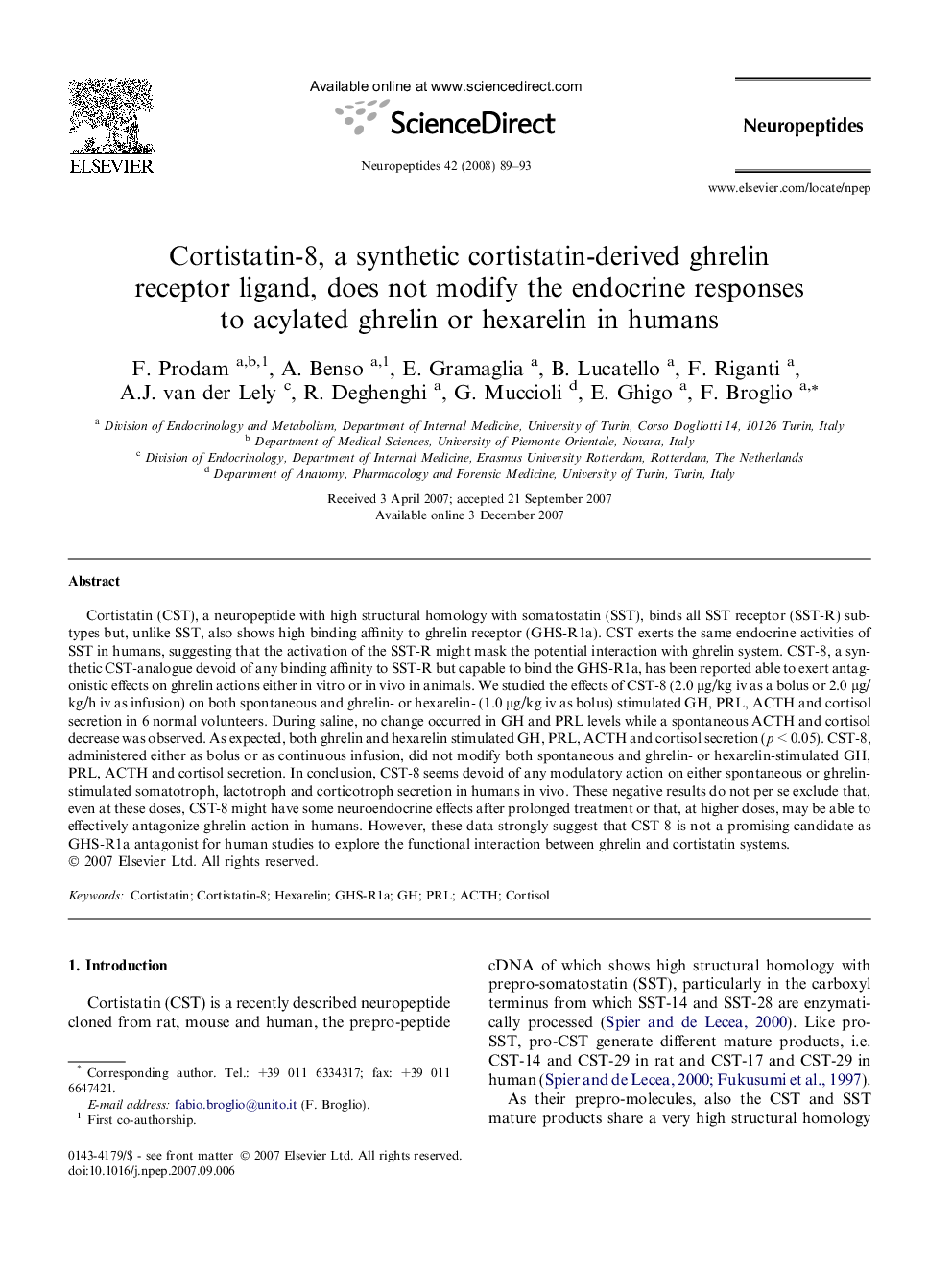| Article ID | Journal | Published Year | Pages | File Type |
|---|---|---|---|---|
| 2808324 | Neuropeptides | 2008 | 5 Pages |
Cortistatin (CST), a neuropeptide with high structural homology with somatostatin (SST), binds all SST receptor (SST-R) subtypes but, unlike SST, also shows high binding affinity to ghrelin receptor (GHS-R1a). CST exerts the same endocrine activities of SST in humans, suggesting that the activation of the SST-R might mask the potential interaction with ghrelin system. CST-8, a synthetic CST-analogue devoid of any binding affinity to SST-R but capable to bind the GHS-R1a, has been reported able to exert antagonistic effects on ghrelin actions either in vitro or in vivo in animals. We studied the effects of CST-8 (2.0 μg/kg iv as a bolus or 2.0 μg/kg/h iv as infusion) on both spontaneous and ghrelin- or hexarelin- (1.0 μg/kg iv as bolus) stimulated GH, PRL, ACTH and cortisol secretion in 6 normal volunteers. During saline, no change occurred in GH and PRL levels while a spontaneous ACTH and cortisol decrease was observed. As expected, both ghrelin and hexarelin stimulated GH, PRL, ACTH and cortisol secretion (p < 0.05). CST-8, administered either as bolus or as continuous infusion, did not modify both spontaneous and ghrelin- or hexarelin-stimulated GH, PRL, ACTH and cortisol secretion. In conclusion, CST-8 seems devoid of any modulatory action on either spontaneous or ghrelin-stimulated somatotroph, lactotroph and corticotroph secretion in humans in vivo. These negative results do not per se exclude that, even at these doses, CST-8 might have some neuroendocrine effects after prolonged treatment or that, at higher doses, may be able to effectively antagonize ghrelin action in humans. However, these data strongly suggest that CST-8 is not a promising candidate as GHS-R1a antagonist for human studies to explore the functional interaction between ghrelin and cortistatin systems.
